Affiliate links on Android Authority may earn us a commission. Learn more.
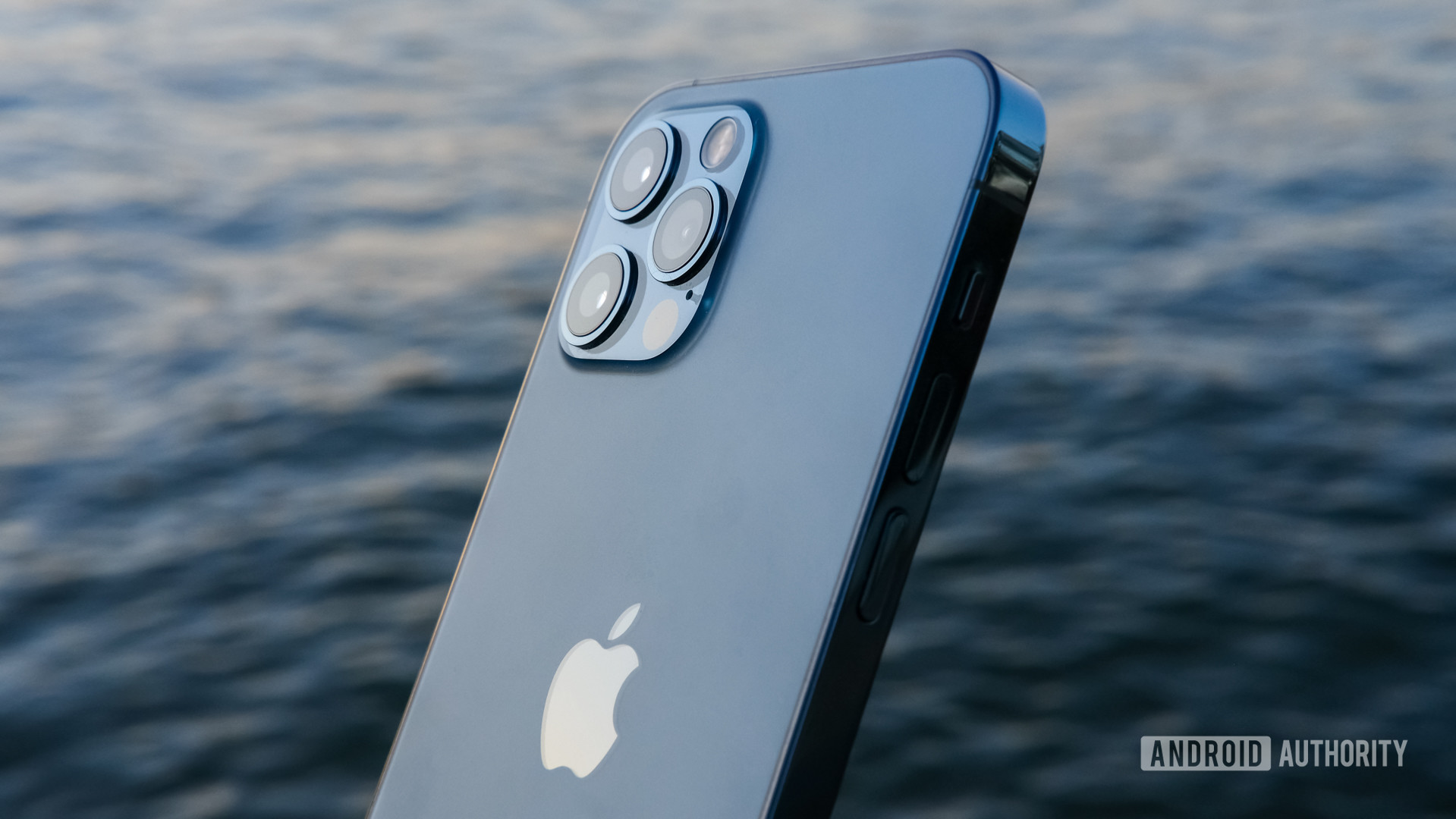

Apple iPhone 12 Pro review: All the right angles
Published onFebruary 5, 2022

Apple iPhone 12 Pro
What we like
What we don't like
Our scores

Apple iPhone 12 Pro
Each year’s iPhone launch is a pretty huge event in the tech space. Apple attracts a larger overall audience than nearly any Android manufacturer, mostly due to its widespread appeal and the sheer pull it has on the industry. To put it lightly, new iPhone features (or lack thereof) often set trends for the entire smartphone industry for the foreseeable future.
This year, Apple hasn’t made many significant changes with the iPhone 12 Pro, instead opting for a new shape, a smarter 5nm processor, a slightly improved camera, a LIDAR sensor, and magnets. While these alone probably aren’t a good reason to upgrade from your iPhone 11 series device, is the iPhone 12 Pro a good option for those who have been waiting to upgrade their smartphone for some time now?
Find out in our Apple iPhone 12 Pro review.
Design and display: It’s hip to be square
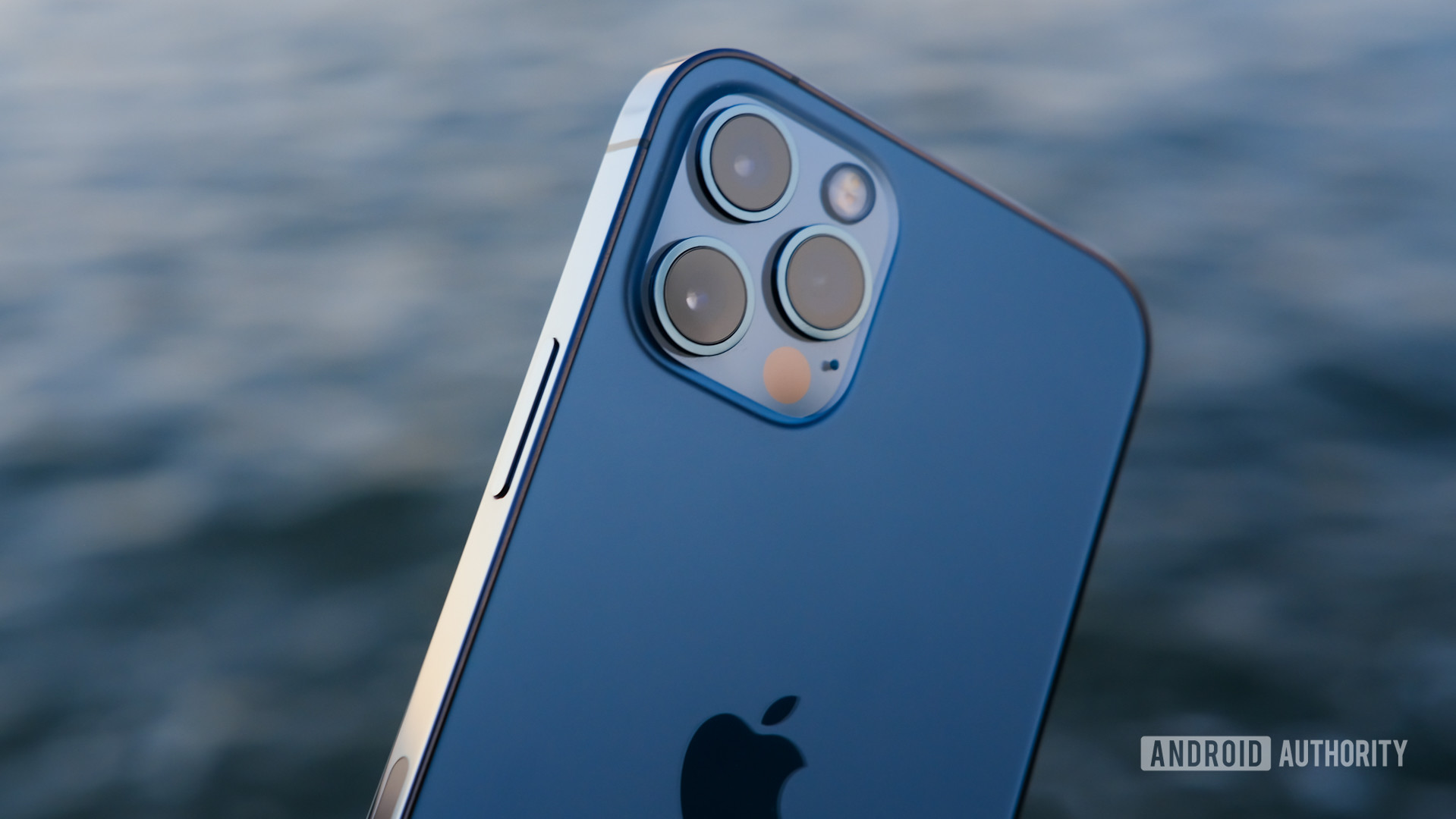
- 146.7 x 71.5 x 7.4mm, 189g
- Flat sides with rounded corners
- Glass back with stainless steel rails
- IP68 water and dust resistance
- MagSafe magnetic charging ring
- 6.1-inch AMOLED (2,532 x 1,170)
- 19.5:9 aspect ratio
- Face-ID notch
- 60Hz refresh rate
- Ceramic Shield glass
The iPhone 12 Pro has a new-again squared-off design, reminiscent of the long-beloved iPhone 4. This will make a lot of longtime fans quite happy. The phone will even stand up on its own due to how flat it is. I dig it.
The rails of the iPhone 12 Pro are made of stainless steel, while the standard iPhone 12 comes with aluminum sides. The stainless steel feels really high quality and quite significant. Holding it side-by-side with the iPhone 12, Apple has really driven home the more premium feel of the 12 Pro. That said, the stainless steel is a huge fingerprint magnet, and it can start to look grimy pretty quickly. Be advised if you like your phone to look as clean as possible.
Embedded in the right side of the frame is a large power button, above a glass window for 5G mmWave antennas. On the left, you’ll find the volume rockers and Apple’s classic notification hardware switch. There is also a SIM card tray near the bottom of the left side of the device.
On the bottom, you’ll find a set of stereo speakers surrounding a lightning charging port. I was really hoping Apple would switch to USB-C charging this year, but it’s becoming more and more likely that Apple will get rid of the port altogether. This is quite a shame because at this point Apple uses lighting for about half its products and USB-C for the other half.
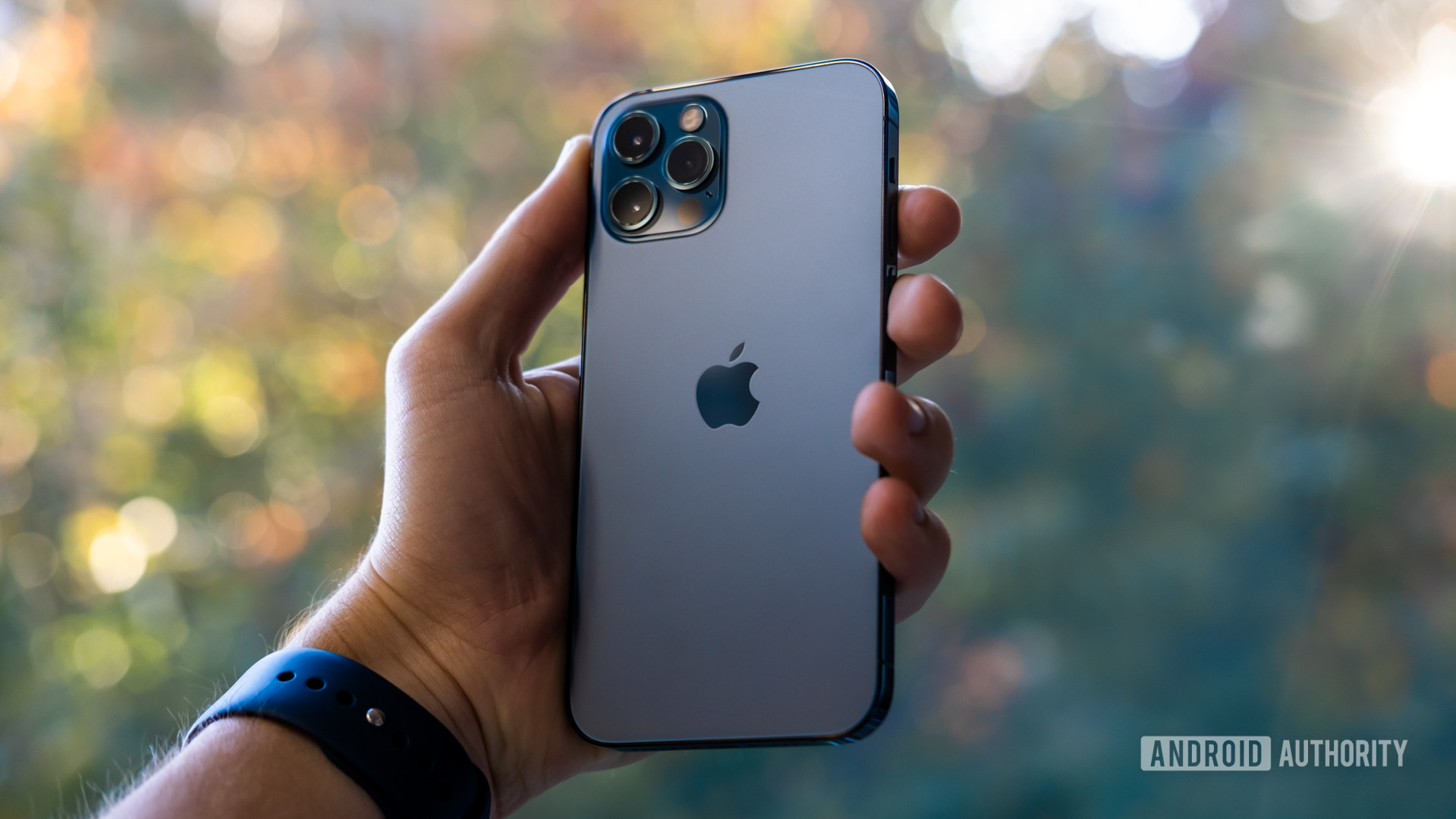
The speakers sound decent, but definitely lack low-end, as most smartphones do. Otherwise, they do get quite loud, and sound didn’t get too distorted at maximum volume.
The front of the phone looks nearly the same as the iPhone 11 Pro, save the flat screen. It uses a new Ceramic Shield glass which is supposed to make it more shatter-resistant, though Apple also claims that the new flat design is also a big reason behind that shatter-resistance. Either way, Apple is claiming four times better shatter resistance compared to the iPhone 11 Pro, which is impressive, though we haven’t independently confirmed this claim.
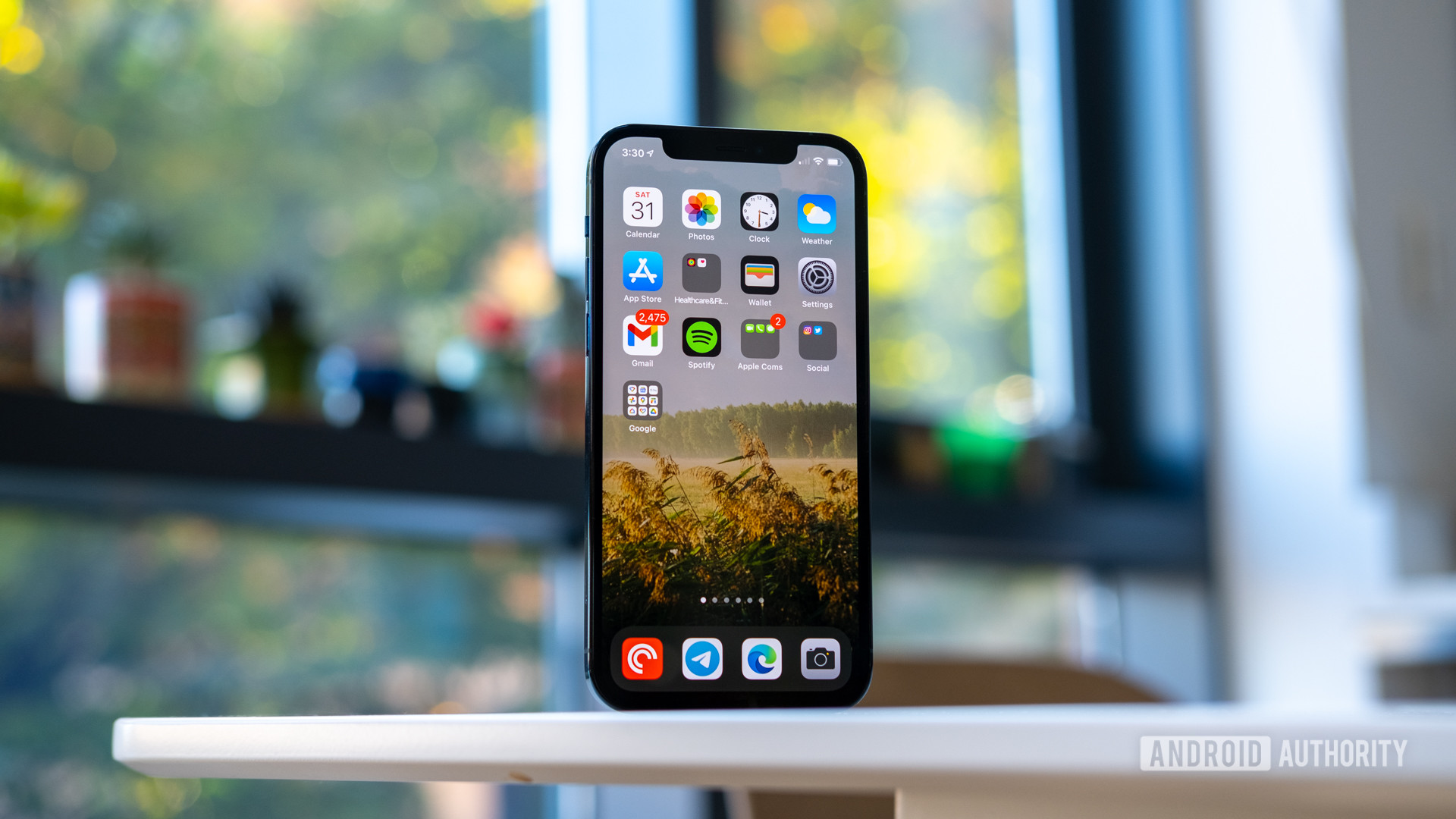
The display of the iPhone 12 Pro is a 6.1-inch super retina display with a resolution of 2,532 x 1,170 and a pixel density of 460ppi. It can reach a peak brightness of 1200 nits, and it looks sharp and vibrant. This isn’t a high refresh rate display, however, just 60Hz. It’s a bit of a miss considering Apple’s own iPad now uses a 120Hz ProMotion display, and almost all Android phones in this price range have at least a 90Hz display. If this is a killer feature for you, there are a plethora of Android phones with high refresh rate displays.
The Face ID notch on the iPhone 12 Pro hasn’t changed since the original iPhone X, but I think most have gotten used to it at this point. While it’s likely that Apple will eventually shrink the notch and possibly even move the sensors under the display, it really doesn’t bother me anymore. I was, however, hoping that the company would bring back Touch ID this year to match the sensor on the new iPad Air. Especially in a year when we’re all wearing masks. Unfortunately, this design was likely finalized before COVID really became a widespread issue. Hopefully, we’ll see a fingerprint sensor next year. Still, Face ID is incredibly fast and reliable and works in all lighting conditions.
This is one of the best-looking iPhones ever.
With the iPhone 12 series, Apple has brought back the MagSafe branding, in a different form. All iPhone 12 models now have a circular magnet on the back of the phone which helps align your iPhone with a MagSafe wireless charger.
The new MagSafe magnet in the iPhone is also spurring a slew of third-party accessories to work with the iPhone 12 Pro. Expect new car dash mounts, wall mounts, and other devices accessories that take advantage of the magnets. Apple itself is making accessories like an optional wallet case that can stick to the back of your phone. This obviously has its disadvantages considering the magnets aren’t ridiculously strong, and the wallet could potentially fall off pretty easily. We’re still waiting for our iPhone 12 Pro wallet in the mail though, so we’ll be sure to let you know how well it works when we get ours in.
Overall, I think the iPhone 12 Pro is one of the most attractive iPhones Apple has ever made. The boxy design of the iPhone 4 is legendary, and that alone will likely be enough to sway a lot of buyers. This device definitely feels like one of the most premium phones I’ve held this year, especially with the stainless steel rails and soft-touch glass on the back. Even basic design decisions like this make the 12 Pro feel quite a bit more premium than even the standard iPhone 12 — a necessary evil when Apple wants to charge $150 more for the Pro over the standard iPhone 12.
Battery: Slipping a bit
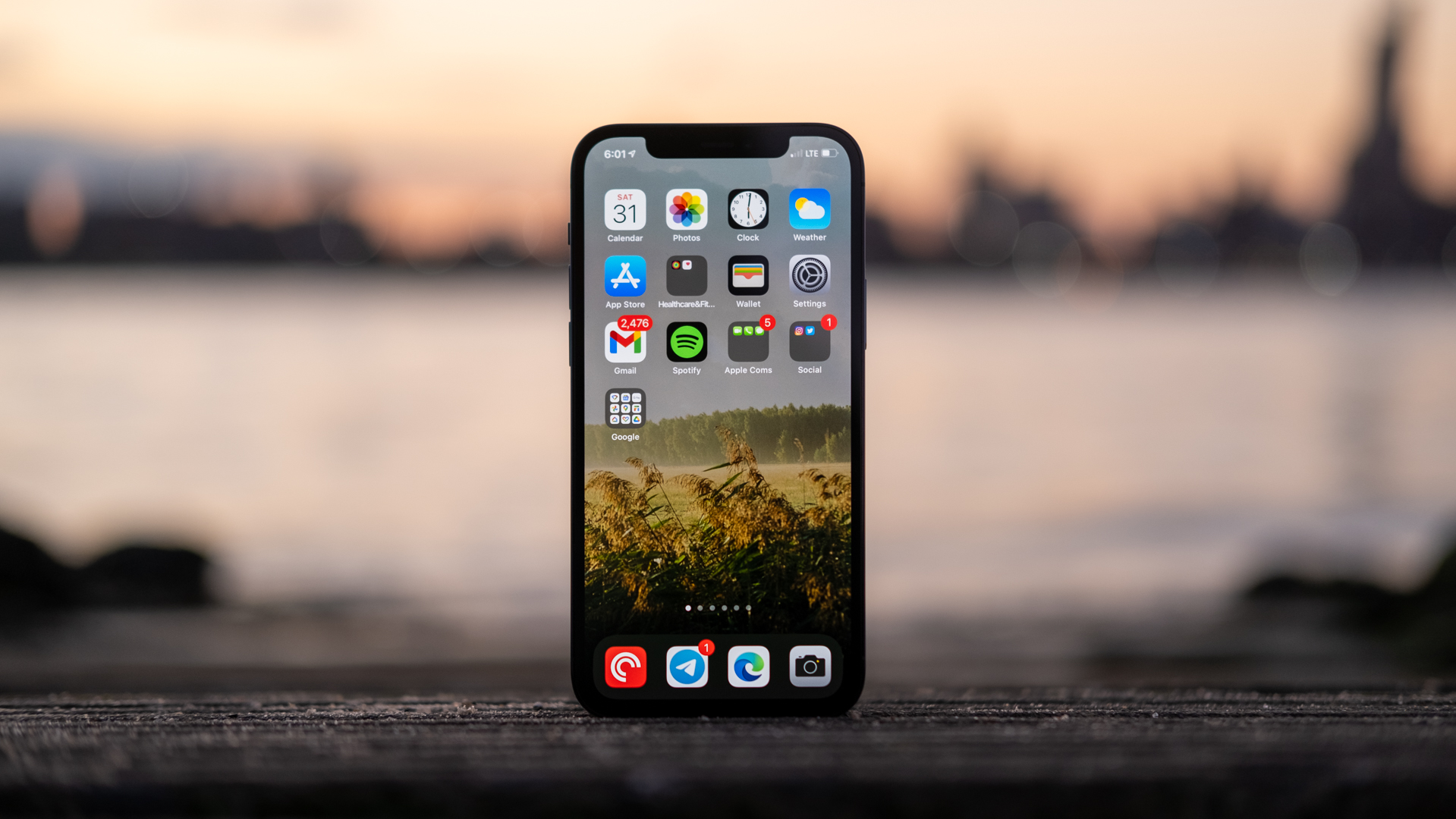
- 2,815mAh battery
- 18W wired charging
- Wireless charging up to 15W
The iPhone 12 Pro is using a slightly smaller battery than last year’s iPhone 11 Pro. It sports a 2,815mAh cell vs the 3,040mAh cell in the iPhone 11 Pro. Apple says this shouldn’t matter much because the new A14 Bionic processor uses a 5nm process node, which makes it both faster and more power-efficient. However, real-world results told a slightly different story.
I got an average of six hours of screen on time on the iPhone 12 Pro, which translated to about a day and a half. I took the phone off the charger at 8AM and it died around 2PM the next day. I’m a moderate-to-heavy user but don’t play many games on my phone. Mainly, I’m jumping between several messaging apps, Twitter, Instagram, and Reddit.
This battery life should do fine for most people, getting you through a night out if need be. That said, it’s a bit of a bummer to see a decrease in battery life compared to last year, where I managed about seven hours of screen-on time. The upcoming iPhone 12 Pro Max should do much better where battery life is concerned. Stay tuned for our coverage of that device.
The iPhone 12 Pro also still uses 18W charging, so if you were hoping to get a super quick top-up as you can with a variety of Android phones, you’re out of luck. Many Android phones now charge at 30, 65, and even 120 watts now, so 18W just feels slow, even if it’s quite a bit better than the 5W charging Apple was using two years ago.
Apple includes a USB-C to lightning cable in the box but no actual power adapter, citing environmental conservation as its reasoning. That means you’ll have to buy your own USB-C charger separately if you don’t already have one. Apple sells a 20W charging brick for $19, but now that Gallium Nitride chargers are becoming more popular, you can get a much smaller brick that delivers the same power for cheaper.
Related: The best wall chargers
As for wireless charging, the official MagSafe charger costs $40 and will charge your phone at 15W — twice as fast as the previous speed of 7.5W. Unfortunately, you’ll need to use an official MagSafe charger to achieve these speeds. If you use a standard Qi charger, the maximum charging rate you’ll be able to achieve is the same old 7.5W as before.
Related: MagSafe takes us closer to portless phones, but is this the future we want?
The official MagSafe charger is also quite short. The length of the cable makes the official charger only really suitable for desk use, and only if you have an outlet super close by. I’d prefer it if Apple doubled the length of the charger to make it easier to put in more places, or alternatively, just allowed you to attach your own charging cable to the magnetic pad.
Performance: Killing it, as usual
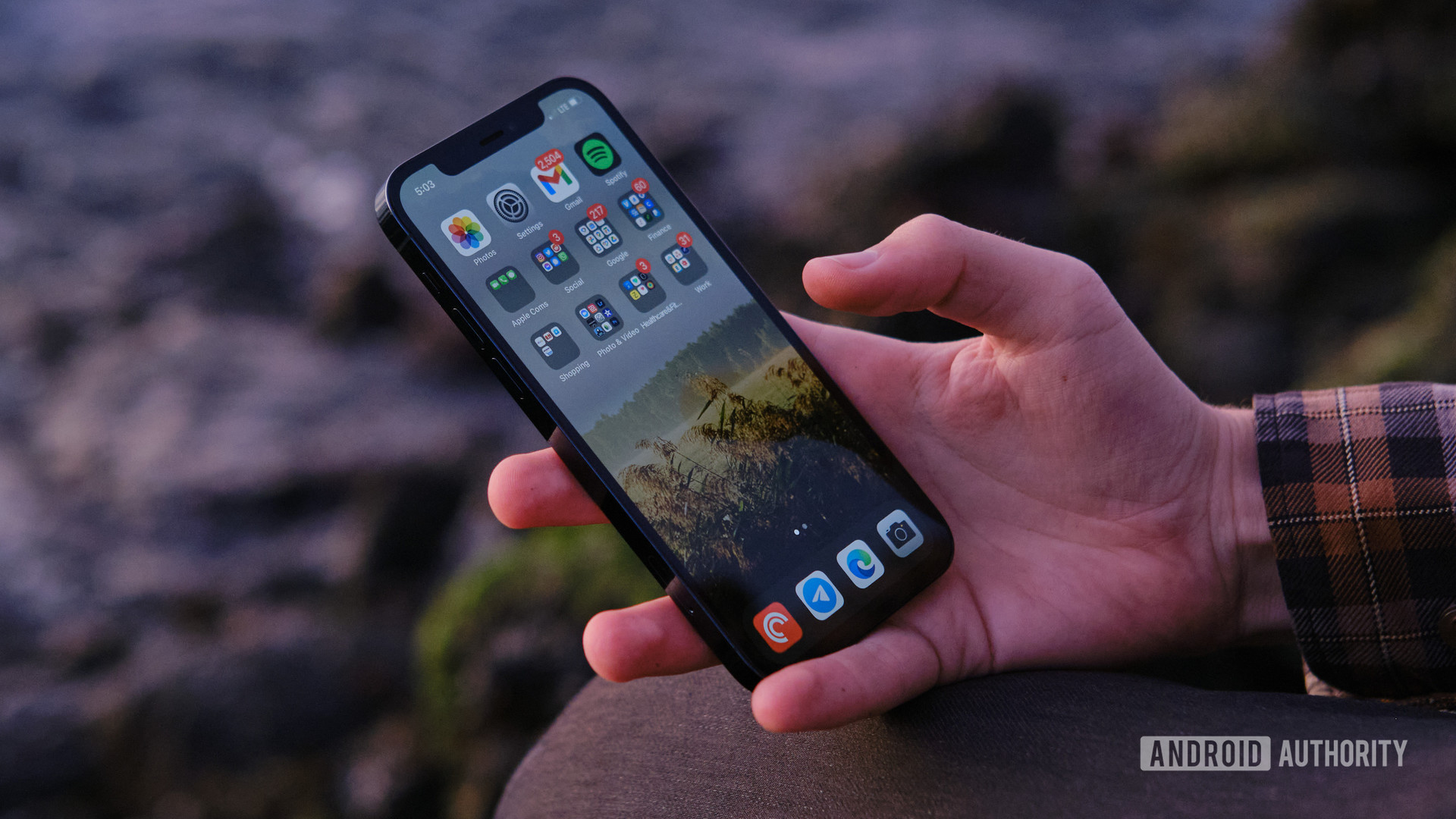
- Apple A14 Bionic
- Qualcomm X55 5G modem
- 6GB of RAM
- 128-512GB of storage
As far as performance is concerned, Apple says that the A14 Bionic is one of the fastest chips ever made, even besting Qualcomm’s Snapdragon 865. We’re waiting to finalize those results with our own Speed Test G benchmark, but I can tell you that in daily use it is very, very fast. I’ve had no issues with slowdowns or laggy apps. The raw speed of this chip leads me to believe that this phone should last a very long time. Considering many people are still using the iPhone 6, Apple silicon has a good reputation for lasting a good while. And with Apple’s persistent software updates lasting up to five years, you can be sure the iPhone 12 Pro will be supported for years to come.
Benchmarks show the iPhone 12 Pro besting the iPhone 11 Pro by a considerable amount. AnTuTu showed a jump of nearly 100,000 points, primarily due to an almost 2x boost in memory performance. The iPhone 12 Pro has 6GB of DDR4x memory, which is the most, and fastest memory ever in an iPhone. While most Android devices have at least 6GB of RAM with 8GB as the new baseline for flagships, the efficient RAM management in iOS makes this far less important on the iPhone.
Deep dive: Apple A14 Bionic test — Is iPhone silicon still more powerful than Android SoCs?
3DMark showed a much smaller boost, primarily because there are more minor upgrades in the GPU department. Still, it’s nice to see a considerable improvement year over year.
In Geekbench 5, the iPhone 12 Pro absolutely slayed in both single-core and multi-core performance. The A13 Bionic in the iPhone 11 Pro was already besting the Qualcomm 865 Plus in the ASUS ROG Phone 3 in single-core performance with a slight edge in multi-core performance, but the A14 widens that gap even more, with a pretty big jump in single-core and especially multi-core performance.
iPhones usually lead the industry in performance, and that remains true here. They also tend to maintain great performance for years, partially due to the sheer amount of version updates they receive. Many iPhones get five full version updates before they’re no longer supported by Apple. That’s huge.
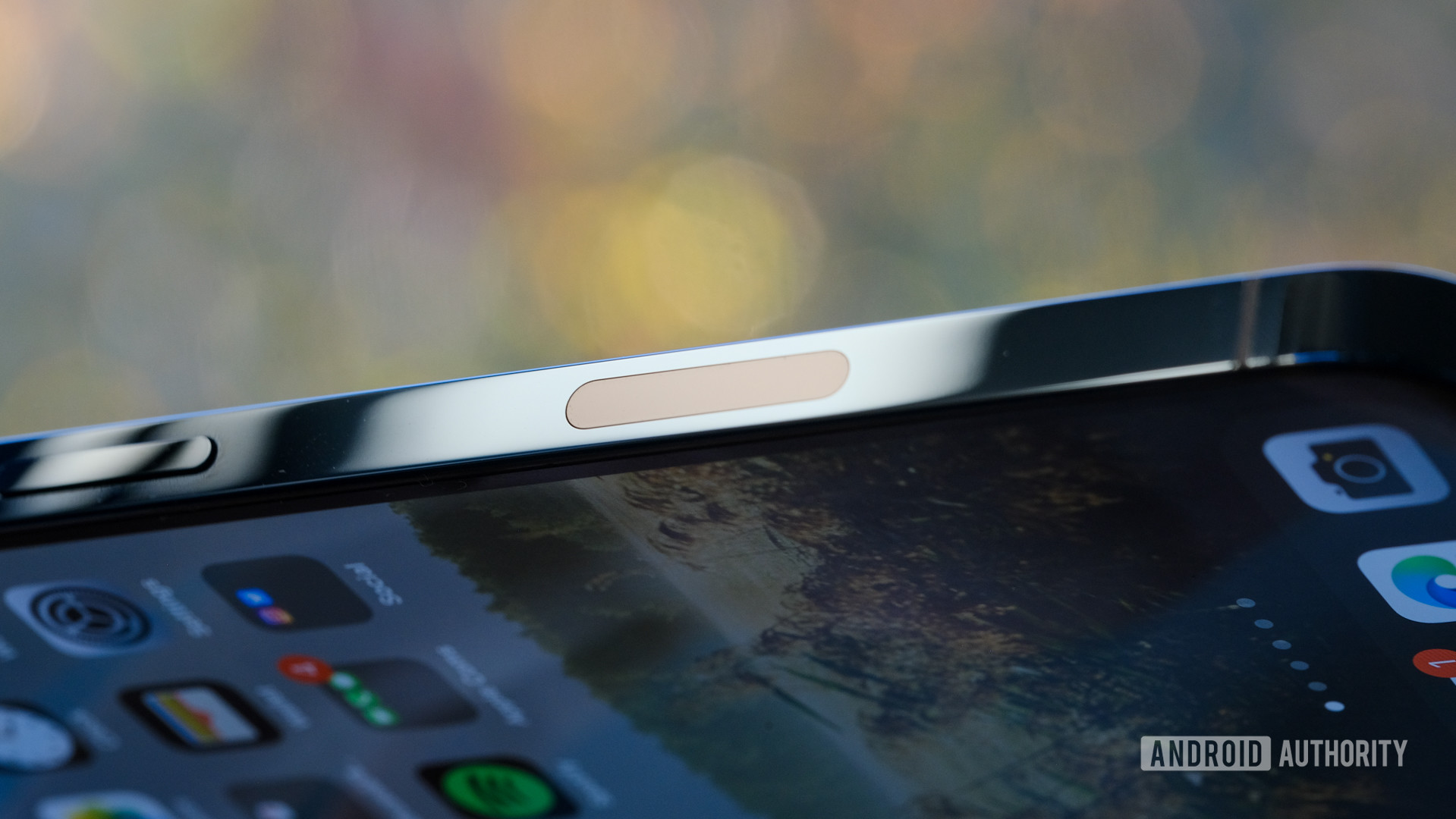
As I noted earlier, the iPhone 12 Pro also sports 5G capabilities. It’s using Qualcomm’s X55 5G modem, allowing it to achieve top speeds of over 4Gbps on Verizon mmWave in optimal conditions. Of course, Verizon is currently the main telecom company in the United States using mmWave tech broadly. You’ll mostly be using mid-band and low-band 5G if you’re on any other carrier, save a few pockets of mmWave from T-Mobile and AT&T.
Still, 5G speeds are quite nice. I regularly got 150Mbps on Google Fi using T-Mobile Mid-Band 5G, and a friend in Canada regularly saw 300mbps on Telus. 5G is finally starting to show real benefits, especially in offloading congestion from 4G networks.
See also: The best 5G phones you can buy right now
The iPhone 12 Pro will only use 5G bands when it needs to, as a battery-saving measure. This makes sense because high-speed 5G radios use about 20% more power than 4G bands. Especially when pulling mmWave, the iPhone 12 Pro can get quite hot and drain much faster. In daily use though, you likely won’t see a huge power drain from 5G, mainly due to this dynamic usage.
While I still don’t think 5G is a feature that you should upgrade your phone for, there’s really no reason not to get a 5G phone at this point. Almost all new devices coming out have at least some form of 5G capability, from the flagship Snapdragon 865 to the mid-range Snapdragon 765G. It’s a good idea to get the capability for future-proofing if you’re upgrading your phone, but not a reason in itself to get a new device.
Camera: Better low-light and Dolby Vision HDR video
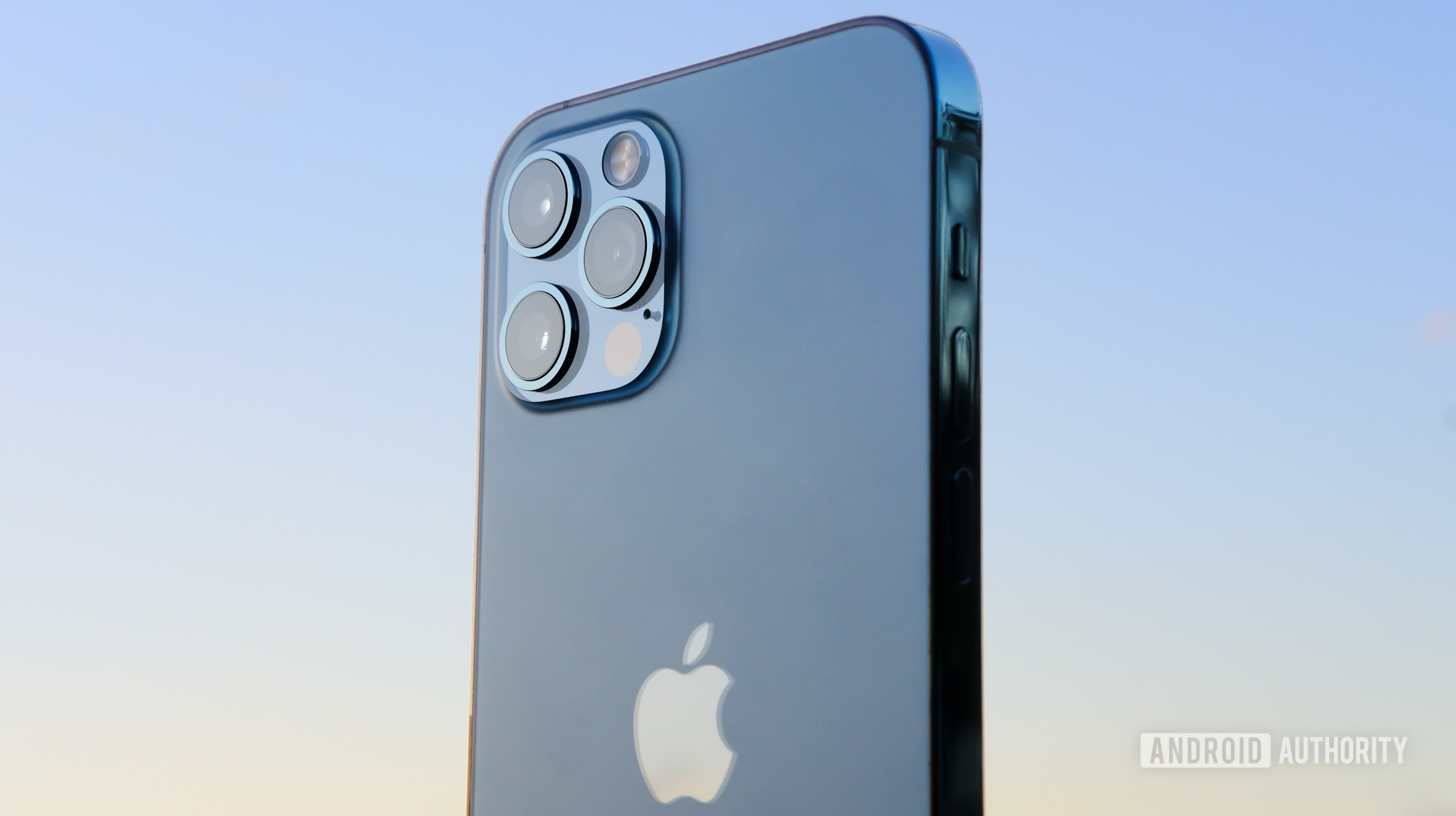
- Main: 12MP, ƒ/1.6 aperture
- Wide: 12MP, ƒ/2.4 aperture and 120° field of view
- Tele: 12MP, ƒ/2.0 aperture, 2x optical zoom
- Selfie: 12MP, ƒ/2.2 aperture
- LIDAR sensor
- Video: Up to 4k 60fps
- Dolby Vision HDR video
- Night mode portrait mode
The iPhone 12 Pro has a very similar camera system to last year’s iPhone 11 Pro. The biggest two changes are the switch to a wider f/1.6 aperture in the main lens vs the f/1.8 lens in the iPhone 11 Pro. Additionally, there is a new LIDAR sensor that helps the iPhone 12 Pro acquire focus better in lower-light environments. That said, it’s also got some new software features like 4k 60fps Dolby vision HDR video capture alongside Night Mode Portrait Mode.
In total, there are three main lenses on the back, and one on the front. You’ve got a main 12MP camera with an f/1.6 aperture, a wide 12MP camera with an f/2.4 aperture, and a 12MP 2x optical telephoto lens with an f/2.0 aperture. On the front, you’ve got a 12MP selfie camera embedded inside the Face ID 3D face unlock system.
Photos from the iPhone 12 Pro look quite good, with nice dynamic range and overall sharpness. Apple is a bit less overly-aggressive with HDR than it used to be. This is especially true when it comes to skin tones and hair due to Apple’s new Smart HDR3 processing. Shadows are still a bit more raised than I would normally like, but this gives a bit more flexibility in the editing process versus not capturing that information.
Compared to the Pixel 5, the iPhone 12 Pro retains slightly more color detail in the highlights, but the Pixel is slightly more contrasty. Google tried to make the Pixel camera processing more like that of a Caravaggio painting, with deeper shadows. Honestly, the main camera sensors of these phones are extremely similar, but you can definitely see a bit more color on the iPhone. Both examples above are from Night Mode on each phone. The iPhone does Night Mode automatically and doesn’t have a way to manually activate it, compared to the optional Night Sight mode on the Pixel 5.
The wide-angle lens in the iPhone 12 Pro has better distortion correction and edge sharpness than the iPhone 11 Pro, which makes it much more usable. Compared to the Pixel 5 it retains much more color, and it’s also wider. This lens is also quite sharp overall — noticeably sharper than the iPhone 11 Pro. I’m impressed.
The telephoto lens is the only lens I’m a bit more mixed on. While it’s definitely nicer having an optical 2x telephoto lens in situations with enough light, the smaller f/2 aperture versus the main f/1.6 aperture lens means less light-gathering capabilities. Because of this, the phone will actually continue using the main sensor with a software crop in lower-light situations. And because you can’t use night mode with the telephoto lens, the main sensor will also be used for things like portrait mode in low light. That said, the lens definitely produces sharper images than the main sensor in good lighting. It’s nice to have, even if it’s only 2x.
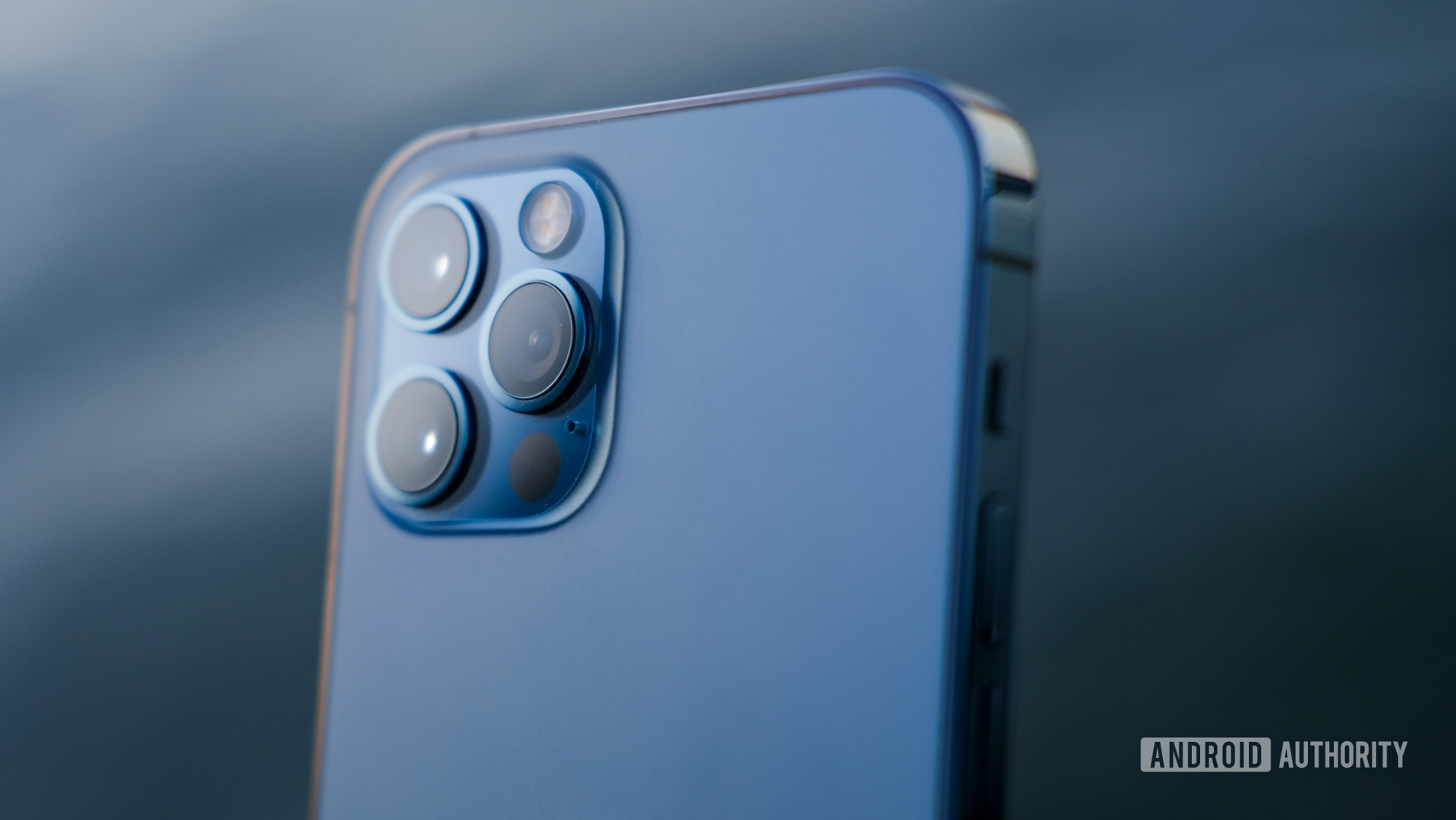
The LIDAR sensor on the iPhone 12 Pro allows the phone to acquire focus much better in lower light situations. It is also a key component of the phone’s night mode portrait mode capabilities. This helps the phone acquire focus incredibly quickly when the lenses can’t do it themselves. It’s quite useful in lower-light situations. This sensor is also used to improve the phone’s AR capabilities, making it an essential feature if you want to scan objects with your device.
Selfies on the iPhone 12 Pro are quite good and are well balanced. You can crop in slightly if you like, but I preferred using it in the zoomed-out mode to get more in the shot. Either way, they’re nice, even if the portrait selfie mode isn’t the best, especially compared to the Google Pixel 5.
Note that all of the photos above have been compressed to optimize page load times. If you want to see these images in their full resolution alongside tons of other sample images and videos, check them out on Google Drive here.
The iPhone has always been one of the best smartphone camera systems for video, and that remains true in the iPhone 12 Pro. The iPhone 12 Pro can shoot up to 4k 60fps video, and it can also shoot in Dolby Vision HDR, which we’ll get into in a bit. Additionally, it has a time-lapse mode, and it can shoot slow-motion video up to 1080p at 240 frames per second.
Overall, video looks great, with good sharpness and dynamic range. While you can still generally tell that this is a smartphone video, it’s honestly fairly close to that of a DSLR camera. Stabilization is incredibly good, and I could easily see myself using this to supplement my own mirrorless camera when I need a smooth clip. I can easily pan with this camera system handheld and it feels like it’s on a dolly. I love that.
Dolby Vision HDR video looks fantastic, if you can find a display to view it on.
More impressive still, the iPhone 12 Pro can shoot Dolby Vision HDR video. If you’re unaware, HDR video works fairly differently than HDR photos. While HDR photos mean there are more defined tones between each color, HDR video can get much brighter while retaining detail in the highlights. Videos will also look much more similar to what our eyes see in real life as the color range is a lot wider.
Watching Dolby Vision HDR video on a capable display, even that of something like the iPhone 12 Pro, is quite a sight. The image is much brighter than something you would be used to seeing usually, probably because the iPhone 12 and iPhone 12 Pro can hit a maximum brightness of 1200 nits. There is far more detail in the highlights than you’re used to seeing.
If you have a device capable of playing it back, you can download this Dolby Vision HDR video I took to see for yourself. Compare it to this video I shot in SDR. Make sure you download and play them back natively.
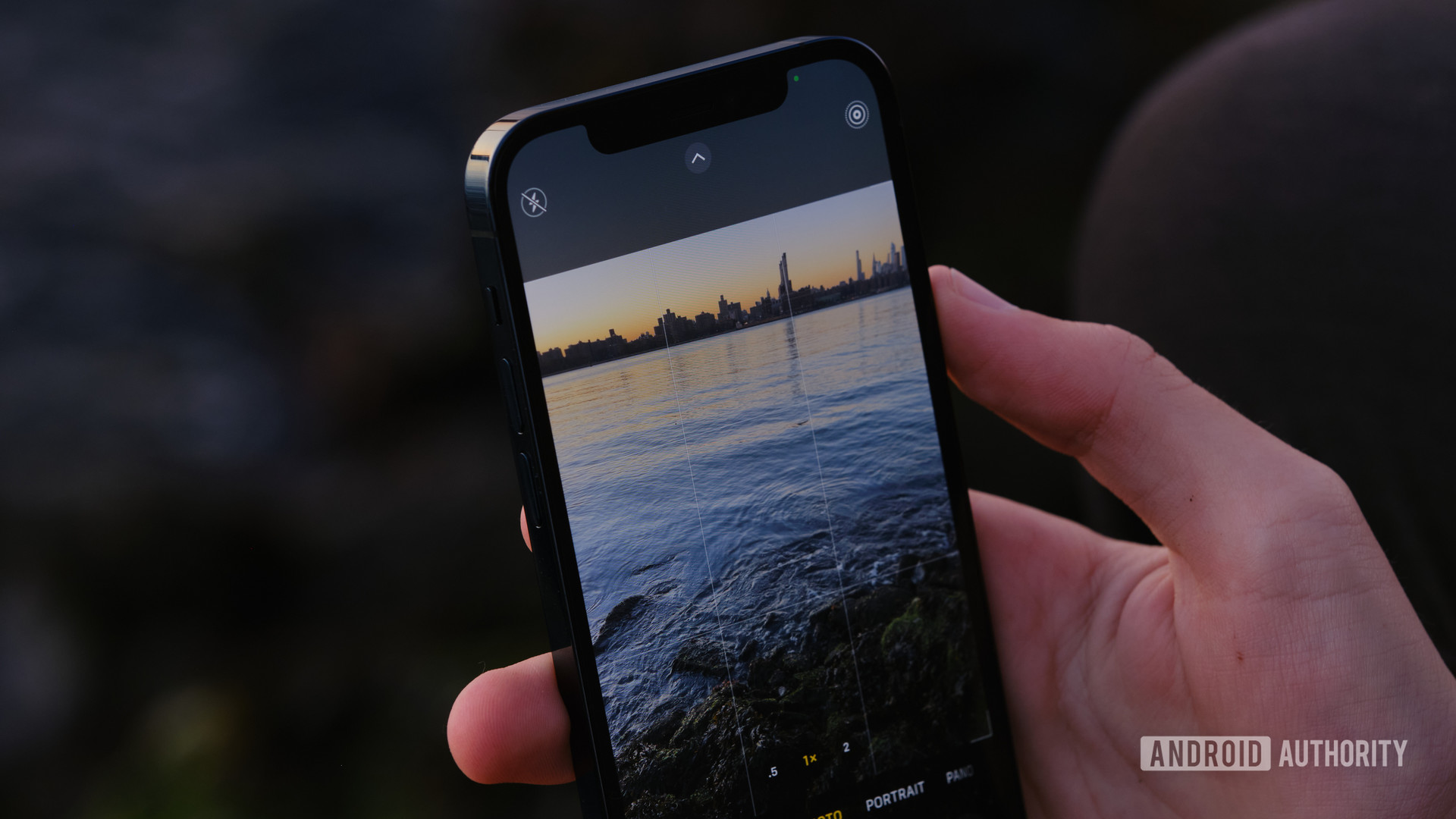
All this said, there aren’t many monitors that can playback Dolby Vision HDR. There are also not many editing programs that can edit the format, either. If you’re showing people your Dolby Vision HDR iPhone video on an iPhone (iPhone 8 and up) or Dolby Vision-capable TV, you’ll notice the difference. If not, you’ll only see the standard dynamic range version of the video. In fact, not even Apple’s own Final Cut Pro editing program can edit Dolby Vision HDR video quite yet.
While it’s unlikely Dolby Vision HDR will take over the world anytime soon, especially since the iPhone 12 and iPhone 12 Pro are the only cameras to record the format so far, Apple’s investment in the format is likely to jumpstart the creation of Dolby Vision HDR cameras, more Dolby Vision HDR displays, and compatibility with video editing applications.
The camera app on iOS is fairly simplistic, with most settings hidden in a truncated fashion. There are five main modes – slo-mo, video, photo, portrait, and pano. If you tap the dropdown at the top of the screen, you’re met with additional settings, and in the video mode, you can easily swap between video resolutions and frame rates by tapping in the top right corner. For more precise camera settings, you’ll have to navigate to the camera app in the settings app. This will allow you to do to things like turning HDR video on and off or adjusting the grid.
Software: More like Android every year
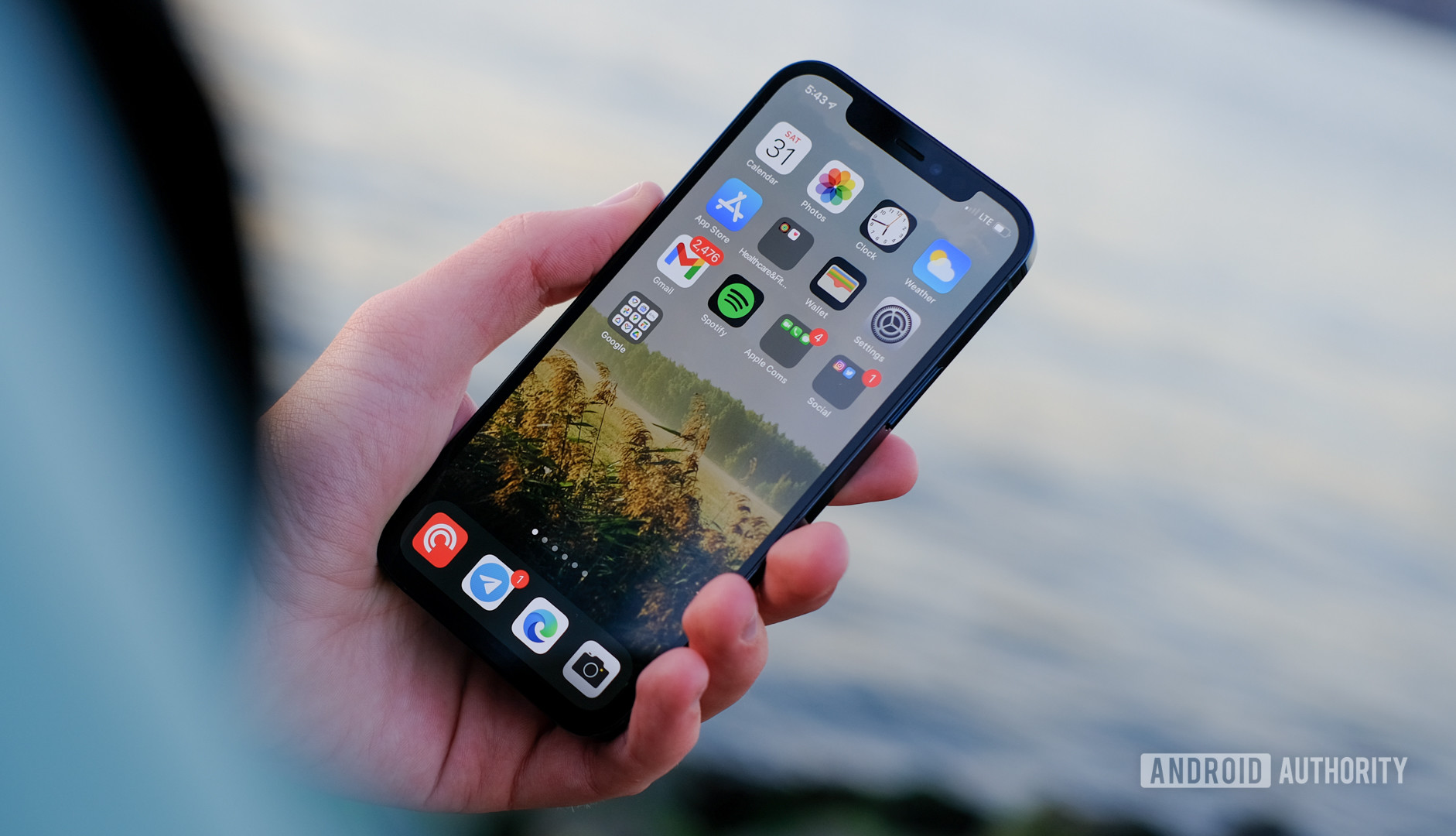
- iOS 14.1
While most Android users enjoy a pretty ridiculous amount of customization, iOS has traditionally been pretty locked down. That being said, in iOS 14 Apple has added a considerable amount of features that have been on Android for years.
Possibly the biggest addition to iOS 14 is widgets. Any app developer can create a widget for their app, in multiple sizes and shapes. This makes it much easier to control things like podcasts from your home screen or get a weather report at a glance. While Android has had widgets for years now, Google hasn’t really updated them in a very long time. Apple bringing widgets to iOS 14 may very well incentivize Google to modernize widgets on its own platform, and that’s a good thing for everyone.
Other changes in iOS 14 include the App Library — an organized space for all your apps on the far right home screen, a more compact UI, and picture-in-picture mode. Otherwise, it’s fairly cut and dry. iOS is iOS, and you won’t find a proper app drawer or much customization at all. That being said, iOS is very well put together, and if you don’t care much about customizing your device, the operating system is just fine.
The App Library in iOS 14 is probably the closest thing we’ve seen to an app drawer on iOS. Apps are automatically organized by category, and you can find everything in one place. As someone who hates cluttered home screens, this was a huge update for me. You can now remove apps from your home screen but keep them tucked in the app library, which allows for a much less cluttered iOS experience. There’s also a new widget that will give you a group of apps you use frequently, which makes it easier to find the app you want to launch faster. Still, I miss the gestures in Android that allow you to launch a specific app with something as simple as a pinch.
Million of people love iOS specifically because of how simplistic and intuitive it is to use. There are still plenty of settings in iOS, but they’re hidden away in the settings app. While I personally prefer my settings to be upfront and center within the app itself, many people I’ve talked to who use iPhones as daily drivers have cited the simplicity as a big positive.
One of the biggest things I miss from Android is the Google Assistant. Siri hasn’t had many substantial improvements over the years, and the Google Assistant is both part of my daily routine and my smart home ecosystem. On supported Pixel phones, for example, the Google Assistant can ambiently tell me the music playing in the room, can wait on hold for me, and even screens my calls — Siri can’t do any of these things. While Siri has remained static for a while, Google has been adding legitimately useful features to the Assistant on a consistent basis. Google Assistant is available as an app in Apple’s App Store, but its functionality is incredibly limited compared to the Assistant embedded into Android devices and particularly the Google Pixel series.
It’s the Apple ecosystem that really shines, though. The way devices like the Apple Watch, AirPods, iPads, and MacBooks interact with the iPhone is unlike any other product ecosystem on the market. You can easily send files from your iPhone to your MacBook or iPad with AirDrop. iMessage works on all your devices, including your MacBook. You can listen to music with friends if you both have AirPods. There is so much interoperability between Apple devices, leaving even one device in Apple’s ecosystem can be extremely hard for many people. HUAWEI is the only major Android OEM that has really tried to replicate ecosystem interoperability to such a degree, and while some like Samsung have tried to work with Microsoft to enable similar features in Windows, it’s much clunkier and far less comprehensive.
The Apple Watch on its own is a strong reason why many people feel they can’t move from iPhones to Android. While I generally rock a Fossil Hybrid e-ink watch which I don’t use many features on, I have to admit I’ve been loving using the Apple Watch Series 6 alongside the iPhone 12 Pro. It can turn off the alarm on your iPhone when it notices you moving around in the morning, it integrates with different apps and services to log things like steps and blood oxygen levels, and it can even automatically unlock your MacBook when you’re nearby.
iPhone 12 Pro vs iPhone 12 Pro Max
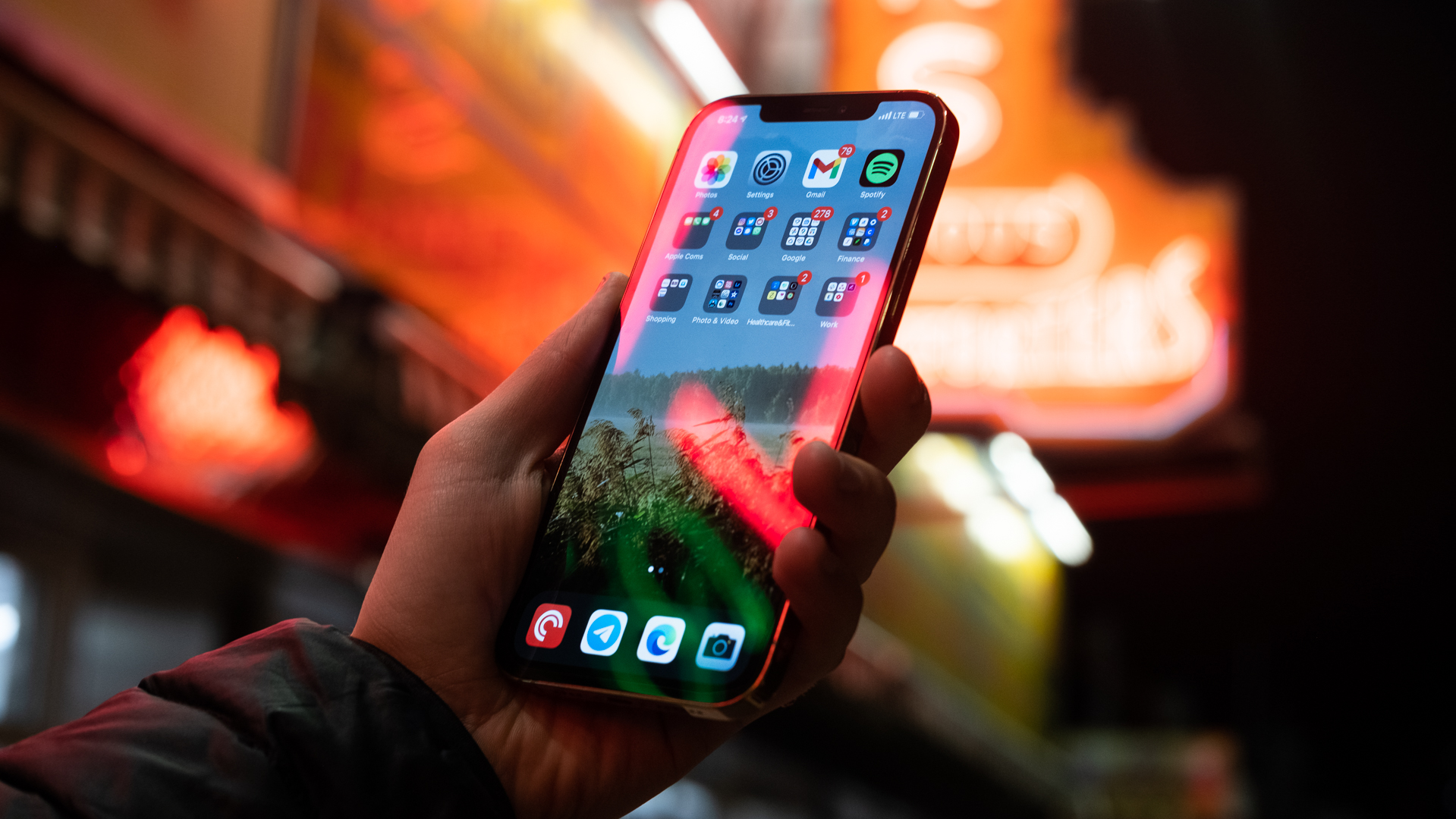
Alongside the iPhone 12 Pro, Apple is also offering a larger iPhone 12 Pro Max. While this phone is identical to the iPhone 12 Pro in most categories, there are a few minor changes that might make you consider picking up the bigger, beefier version of Apple’s 2020 iPhone.
The first and most obvious difference between the two units is the screen size. The iPhone 12 Pro Max is using a massive 6.7-inch display, with a resolution of 2,778 x 1,284 and a Pixel density of 458ppi. This results in a pretty huge phone, which is fantastic for media consumption and two-handed typing but is certainly more difficult to navigate. I’m personally a fan of smaller devices, especially the super-tiny iPhone 12 Mini, but for those that love big phones, the iPhone 12 Pro Max is one of the biggest phones you can get.
Alongside a big display comes a big battery. Last year’s iPhone 11 Pro Max got substantially better battery life than the standard iPhone 11 Pro, and that remains true here. While the iPhone 12 Pro got about six hours of screen-on time or about a day and a half of use, the iPhone 12 Pro Max saw nearly eight hours of screen on time, which was effectively two entire days of use. This is due to the bigger 3,687mAh battery, which is a little over 30% larger than the 2,815mAh battery in the iPhone 12 Pro. If you’re someone who goes long periods without charging your phone, the larger battery in the iPhone 12 Pro could be a strong point to consider.
But maybe the biggest reason people were excited about the iPhone 12 Pro Max is the much bigger primary camera sensor. The Pro Max has a 47% bigger main sensor, which theoretically should allow for better low-light performance and more natural bokeh. Does it deliver? Well, sort of.
The main camera sensor in the iPhone 12 Pro Max technically lets in 87% more light than that of the other iPhone 12 models, and it also has a higher maximum ISO, allowing it to make images brighter. It also has sensor-shift stabilization vs the more standard optical image stabilization, which moves the sensor itself for more stable photos and video. In theory, this should result in a much better overall image, especially in low light. In reality, images from the iPhone 12 Pro Max and the other iPhone 12 devices are nearly identical.
In the example above, it’s hard to tell the difference between the 12 Pro Max’s bigger main sensor and the smaller sensor on the 12 Pro. You can certainly see the extra reach in the 2.5x optical telephoto lens vs the 2x telephoto lens in the Pro, but in good light, the systems produce nearly identical results.
The biggest advantage I saw in the iPhone 12 Pro Max’s larger sensor had to do with low light. Because the 12 Pro Max lets in more light, night mode didn’t kick in quite as often. And when it did, it didn’t need to leave the shutter open nearly as long. Because of this, there’s a lesser chance your subject will move, resulting in blur. Other than that, I was perfectly happy with the image from every other iPhone 12 device. Honestly, when you compare images from the iPhone 12 Pro Max and even the iPhone 12 Mini side by side, it’s incredibly hard to find a worthwhile difference.
The other camera change in the iPhone 12 Pro Max is the longer telephoto lens, which gives you 2.5x zoom versus the 2x zoom in the iPhone 12 Pro. I was really happy to have that extra optical reach, though it doesn’t nearly match the 5x optical zoom of the OPPO Find X2 Pro or the crazy 10x optical zoom on the HUAWEI P40 Pro Plus. Still, the extra length is better for things like portraits and will give you more detail in images at the expense of a tighter frame.
The video quality of the iPhone 12 Pro Max is nothing short of amazing, though that doesn’t mean video from the other iPhones is bad – they’re nearly as good. Still, the bigger sensor with sensor-shift stabilization makes this one of the best video systems you’ll find on a smartphone. 4k 60p video looks super clean from the large main sensor, and it is also incredibly stable, almost like it’s on a gimbal. Color looked super true-to-life, and watching video back, it feels like it did when I was there. Check out the 4k 60p video sample above to see what I mean.
Overall, I think you should primarily consider the iPhone 12 Pro Max if you want a better screen or better battery life. While the cameras are technically better than the other iPhones Apple currently offers, the differences are minimal enough that it shouldn’t be a primary consideration when purchasing.
Apple iPhone 12 Pro Specs:
| iPhone 12 mini | iPhone 12 | iPhone 12 Pro | iPhone 12 Pro Max | |
|---|---|---|---|---|
Display | iPhone 12 mini 5.4-inch OLED display 2,340 x 1,080 resolution | iPhone 12 6.1-inch OLED display 2,532 x 1,170 resolution | iPhone 12 Pro 6.1-inch OLED display 2,532 x 1,170 resolution | iPhone 12 Pro Max 6.7-inch OLED display 2,778 x 1,284 resolution |
Processor | iPhone 12 mini A14 Bionic | iPhone 12 A14 Bionic | iPhone 12 Pro A14 Bionic | iPhone 12 Pro Max A14 Bionic |
Storage | iPhone 12 mini 64, 128, and 256GB | iPhone 12 64, 128, and 256GB | iPhone 12 Pro 128, 256, and 512GB | iPhone 12 Pro Max 128, 256, and 512GB |
Camera | iPhone 12 mini Rear: 12MP Wide camera, ƒ/1.6 aperture Front: 12MP camera, ƒ/2.2 aperture 12MP Ultra-wide camera, 120 degrees, ƒ/2.4 aperture | iPhone 12 Rear: 12MP Wide camera, ƒ/1.6 aperture 12MP Ultra-wide camera, 120 degrees, ƒ/2.4 aperture Front: 12MP camera, ƒ/2.2 aperture | iPhone 12 Pro Rear: 12MP Wide camera, ƒ/1.6 aperture 12MP Ultra-wide camera, 120 degrees, ƒ/2.4 aperture 12MP Telephoto camera, ƒ/2.0 aperture 4x optical zoom range iDAR scanners Front: 12MP camera, ƒ/2.2 aperture | iPhone 12 Pro Max Rear: 12MP Wide camera, ƒ/1.6 aperture 12MP Ultra-wide camera, 120 degrees, ƒ/2.4 aperture 12MP Telephoto camera, ƒ/2.2 aperture 5x optical zoom range iDAR scanners Front: 12MP camera, ƒ/2.2 aperture |
Battery | iPhone 12 mini N/A MagSafe Wireless Charging up to 15W Qi wireless charging up to 7.5W | iPhone 12 N/A MagSafe Wireless Charging up to 15W Qi wireless charging up to 7.5W | iPhone 12 Pro N/A MagSafe Wireless Charging up to 15W Qi wireless charging up to 7.5W | iPhone 12 Pro Max N/A MagSafe Wireless Charging up to 15W Qi wireless charging up to 7.5W |
Software | iPhone 12 mini iOS 14 | iPhone 12 iOS 14 | iPhone 12 Pro iOS 14 | iPhone 12 Pro Max iOS 14 |
Dimensions and Weight | iPhone 12 mini 131.5 mm x 64.2 mm x 7.4 mm; 135g | iPhone 12 146.7 mm x 71.5 mm x 7.4 mm; 164g | iPhone 12 Pro 146.7 mm x 71.5 mm x 7.4 mm; 189g | iPhone 12 Pro Max 160.8 mm x 78.1 mm x 7.4 mm; 228g |
Color | iPhone 12 mini Black, White, Product Red, Green, Blue | iPhone 12 Black, White, Product Red, Green, Blue | iPhone 12 Pro Silver, Graphite, Gold, Pacific Blue | iPhone 12 Pro Max Silver, Graphite, Gold, Pacific Blue |
Apple iPhone 12 Pro review: Value and competition

- Apple iPhone 12 Pro: 128GB Storage — $999/£999/€1,159
- Apple iPhone 12 Pro: 256GB Storage — $1,099/£1,099/€1,279
- Apple iPhone 12 Pro: 512GB Storage — $1,299/£1,299/€1,509
- Apple iPhone 12 Pro Max: 128GB Storage — $1,099/£1,099/€1,259
- Apple iPhone 12 Pro Max: 256GB Storage — $1,199/£1,199/€1,374
- Apple iPhone 12 Pro Max: 512GB Storage — $1,399/£1,399/€1,609
At $999 for 128GB of storage on the iPhone 12 Pro, Apple is firmly placing itself against flagship competitors in the Android landscape. The aptest comparison would probably be the Samsung Galaxy S20, which starts at $999 for similar specs, though it now goes on sale quite frequently. That device has a smoother 120Hz display, a longer optical telephoto lens, and faster 25W wired charging, alongside the Qualcomm Snapdragon 865 processor. Samsung has also committed to three years of major Android updates for all its devices, so while this isn’t quite as good as Apple’s track record, it’s nice to know you’ll be on the latest Google has to offer for some years to come.
If you want something with even more brawn, there’s the ASUS ROG Phone 3 for $999, which sports the fastest chipset Qualcomm currently offers, the Snapdragon 865 Plus. It also has an incredibly fluid 144Hz display, a huge 6,000mAh battery, and plenty of gaming-centric features.
If you like OnePlus’ flavor of Android, you can now get the OnePlus 8 Pro with 12GB of RAM, 256GB of storage, and Qualcomm’s Snapdragon 865 processor for just $799. That device has a super-fast 120Hz display, 30W wireless and reverse wireless charging and a fantastic camera system.
Spend a little less, and you can get your hands on a Google Pixel 5 for $699. This device has a slower processor in the form of the Qualcomm Snapdragon 765G, but its legendary cameras, wonderful UI, and great 90Hz display are hard to beat.
We then come down to how Apple is pricing against itself. The regular iPhone 12 starts at $799, though it drops to 64GB of storage, 4GB of RAM, one less camera, and no LIDAR sensor. If we move up to a similar specced 128GB of storage the iPhone 12 comes in at $849 though, so you’re really paying $150 for the Pro’s extras. Even so, the design of the Pro is more premium overall, with stainless steel rails vs aluminum, and a soft-touch glass on the back compared to the glossy glass on the iPhone 12. I personally think the upgrades you get with the iPhone 12 Pro are worth it, but if you’d rather spend that extra $150 on something else, the vanilla model is also a great option.
The iPhone 12 Mini is also a fantastic option, sporting the same specs as the iPhone 12, but in a much smaller form factor. If you’re a fan of small devices and don’t care much for the extras in the Pro, you can get that device for even less, starting at $699. That puts it firmly up against the Google Pixel 5, which should be quite a tossup in a lot of categories.
Versus the bigger iPhone 12 Pro Max, there are definitely a couple more differences. You’re getting much better battery life and a much larger screen with the Pro Max, two factors that will probably be top-of-mind for most people. The larger main camera sensor with sensor-shift stabilization is nice to have too, but it doesn’t make a huge difference in use.
Apple iPhone 12 Pro review: The verdict
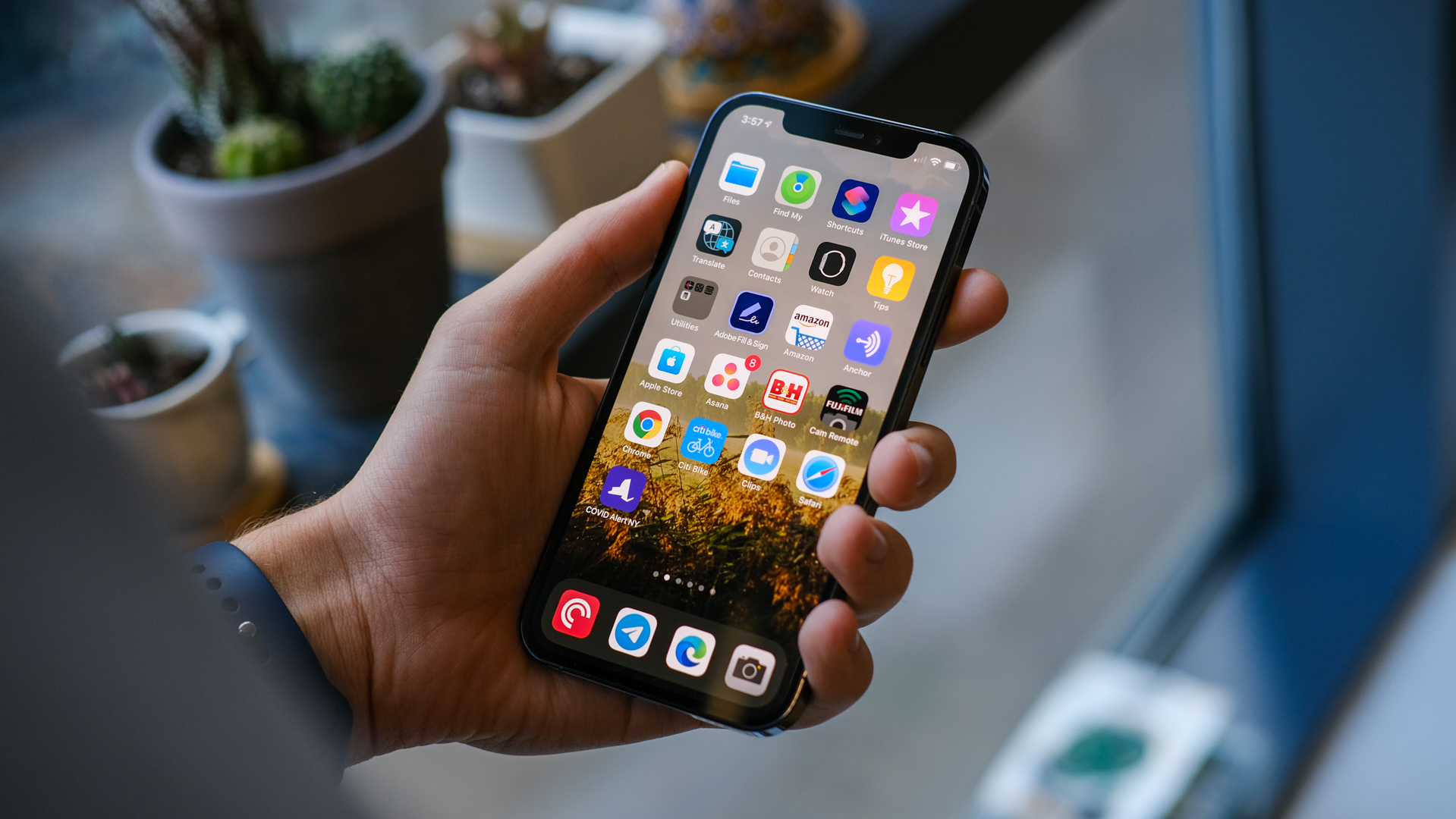
If you already have an iPhone 11 series device, I don’t suggest buying an iPhone 12 Pro. Most of the changes this year are fairly minor. While there could be an argument for upgrading to the iPhone 12 Pro Max for better battery life and a bigger screen, I’d recommend keeping your device for at least two generations before upgrading.
If you’re considering buying the iPhone 12 Pro, there’s a good chance you know you want an iPhone. If that’s the case, you now have quite a few options to choose from in the iOS ecosystem. Apple offers an iPhone at nearly every price point, from the $399 iPhone SE to the upcoming $1,099 iPhone 12 Pro Max. The iPhone 12 Pro slots in near the most premium of the bunch at $999. It’s a good choice for those who want one of the most premium iPhones but don’t want an enormous device.
Read more: iPhone buying guide — Which iPhone is right for you?
Many reviewers have cited that the iPhone 12 and 12 Pro are so similar, it doesn’t make much sense to get the Pro for $150 more for the same storage spec. I would tend to agree, but only if you’re planning on putting a case on your phone. The iPhone 12 Pro undoubtedly feels more premium than the standard 12 due to its stainless steel rails and soft-touch glass back. Nevertheless, if you’re planning on rocking a case most of the time anyway, these benefits aren’t nearly as apparent.
The extra 2x telephoto camera in the iPhone 12 Pro is certainly useful in good light, but because of the smaller aperture on the telephoto lens, the 12 Pro will just crop in using the main sensor in lower-light situations. If the telephoto sensor was longer, say 3x, I would give it more of a pass. But I don’t think having this lens is a huge improvement over software crops, even though I’m a huge proponent of optical telephoto lenses in general.
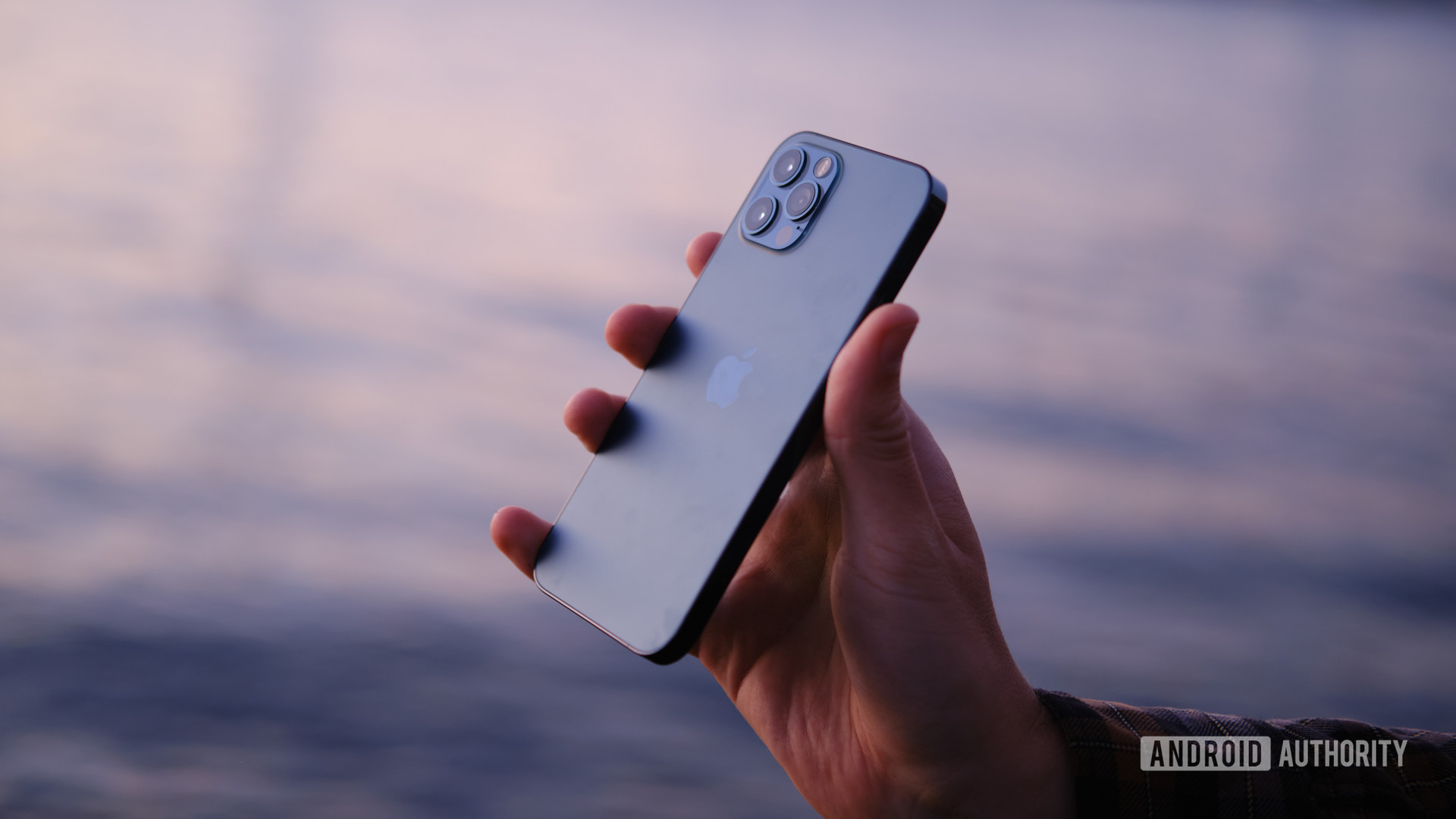
Personally, I would probably pay the extra $150 for the added 2GB of RAM, 4K 60fps Dolby Vision video, extra camera sensor, LIDAR sensor, and better build quality. However, if you’re someone who would rather spend that money on accessories, the standard iPhone 12 will likely be fine for you.
While the standard iPhone 12 comes in a wide variety of bright and flashy colors, you’ll only find the iPhone 12 Pro in a few colors, Pacific Blue, gold, silver, and Graphite. We’ve got the Pacific Blue model, and as you probably noticed in the photos above, it is strikingly similar in color to the actual ocean itself. The gold model has gold rails, but the color of the back is closer to blush gold. The silver and Graphite are more uniform in color.
The iPhone 12 Pro puts up a strong challenge against the best Android phones.
Compared to the current cream of the crop of Android devices, the iPhone 12 Pro is a very strong contender, but it’s missing some features. It doesn’t have quite as long a telephoto lens as some devices like the Samsung Galaxy Note 20 Ultra, its 18W charging is a bit of a slog, and it’s still using a 60Hz refresh rate. If any of these things are important for you, you might want to look at flagships from companies like Samsung or OnePlus.
Considering Samsung’s new Galaxy S30 series is slated to release in January, it may be worth waiting for that series of devices if you’re on the edge. The S30 will be the first to feature Qualcomm’s newest generation of processors and should be a formidable competitor to Apple’s latest.
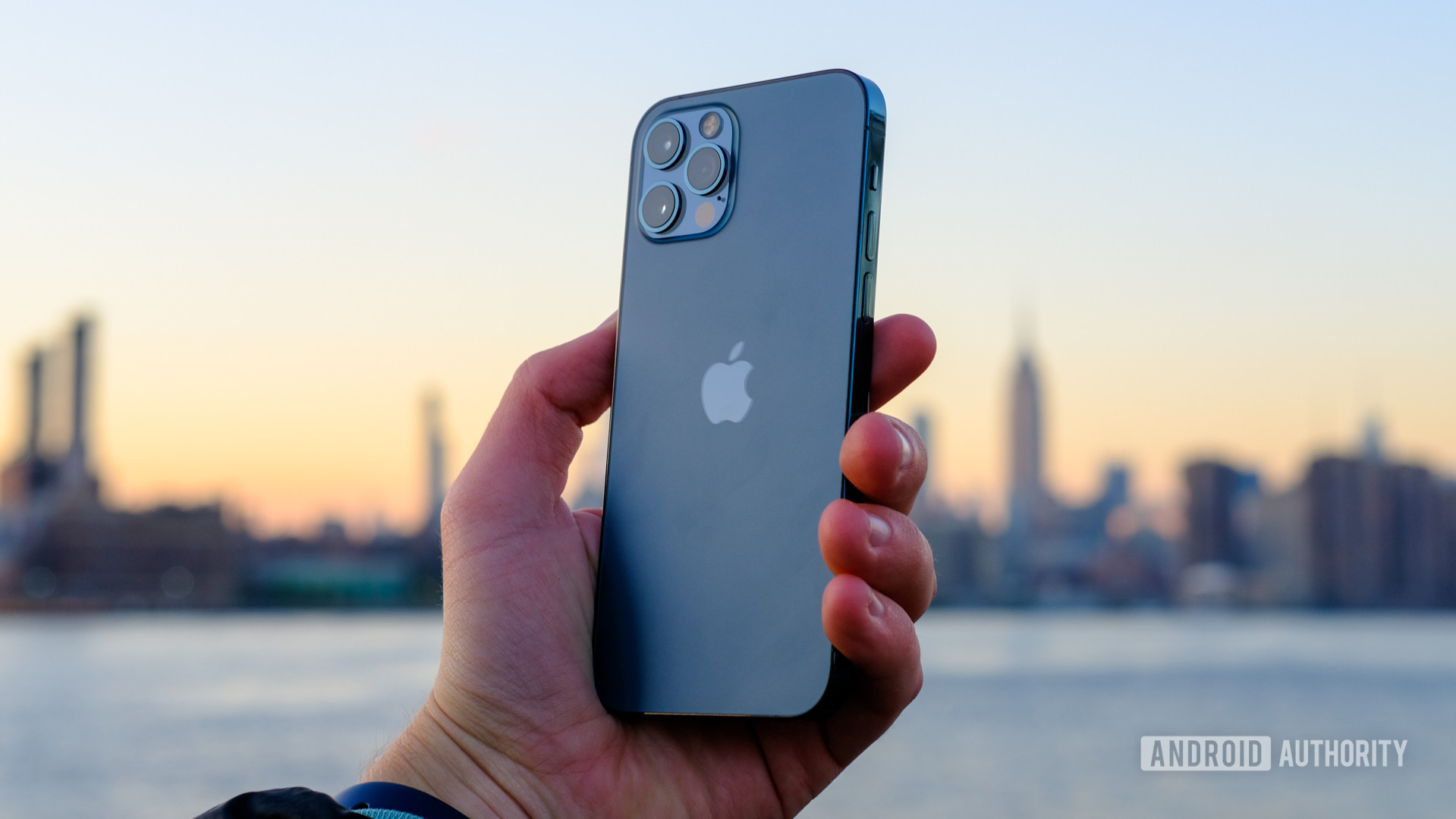
That’s our iPhone 12 Pro review. What do you think of Apple’s new iPhone?